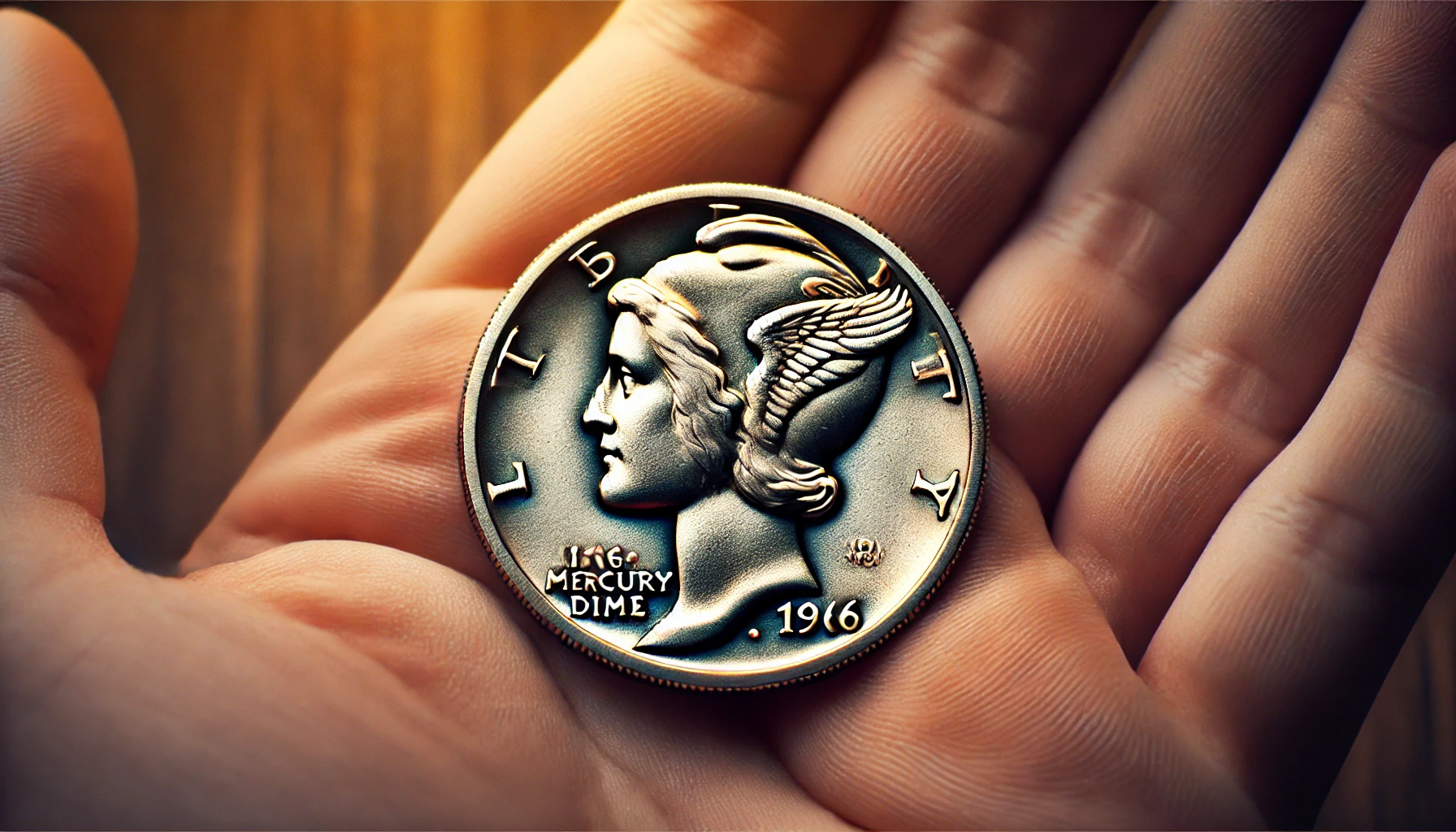The 1916-D Mercury Dime stands as a testament to numismatic rarity and historical significance. Minted over a century ago, this dime has captivated collectors, with some specimens fetching prices upwards of $200,000 at auctions.
Its unique characteristics and limited mintage have solidified its status as one of the most coveted coins in American history.
The Genesis of the Mercury Dime
Introduced in 1916, the Mercury Dime, designed by sculptor Adolph A. Weinman, features Lady Liberty donning a winged cap, symbolizing freedom of thought.
The reverse showcases a fasces intertwined with an olive branch, representing unity and peace. The coin’s design was celebrated for its artistry and symbolism, marking a departure from previous dime designs.
The 1916-D Mercury Dime: A Rarity is Born
The Denver Mint produced a mere 264,000 Mercury Dimes in 1916, the lowest mintage of the series. This limited production was due to the mint’s shift in focus to other denominations, leaving the 1916-D dime scarce from the outset.
Its rarity was further compounded by the fact that many circulated extensively, making high-grade specimens exceedingly uncommon.
Notable Auction Sales
The allure of the 1916-D Mercury Dime has led to impressive auction results:
| Year | Auction House | Grade (PCGS) | Sale Price |
|---|---|---|---|
| 2010 | Stack’s Bowers | MS-67 FB | $207,000 |
| 2020 | Stack’s Bowers | MS-65 | $26,400 |
| 2023 | Stack’s Bowers | MS-65 | $28,800 |
Note: “FB” denotes “Full Bands,” indicating a sharply struck coin with fully separated central bands on the fasces.
Factors Contributing to Its Value
Several elements enhance the 1916-D Mercury Dime’s value:
- Low Mintage: With only 264,000 coins minted, its scarcity is a primary driver of its value.
- Condition: Coins in Mint State (MS) condition, especially those with the Full Bands (FB) designation, command premium prices due to their exceptional preservation and sharpness.
- Historical Significance: As a first-year issue with the lowest mintage, it holds a special place in numismatic history.
Identifying a Genuine 1916-D Mercury Dime
To determine the authenticity and potential value of a 1916-D Mercury Dime:
- Mint Mark: Locate the “D” mint mark on the reverse side, to the left of the fasces, indicating Denver Mint origin.
- Date: Ensure the coin bears the 1916 date on the obverse.
- Full Bands: Examine the central bands of the fasces; fully separated bands denote a Full Bands designation, increasing the coin’s value.
- Professional Grading: Given the prevalence of counterfeits, it’s advisable to have the coin authenticated and graded by reputable services like PCGS or NGC.
The 1916-D Mercury Dime exemplifies how a combination of artistry, historical context, and rarity can culminate in a coin of extraordinary value.
For collectors and enthusiasts, it remains a symbol of numismatic excellence and a tangible link to America’s rich monetary past.
FAQs
Why is the 1916-D Mercury Dime so valuable?
Its value stems from its low mintage of 264,000 coins, historical significance as a first-year issue, and the desirability of high-grade specimens with Full Bands.
How can I verify if my 1916-D Mercury Dime is authentic?
Check for the “D” mint mark on the reverse, confirm the 1916 date, assess the central bands for Full Bands designation, and consult a professional grading service for authentication.
What does the “Full Bands” designation mean?
“Full Bands” refers to the horizontal bands on the fasces being fully separated and distinct, indicating a sharp strike and enhancing the coin’s value.




